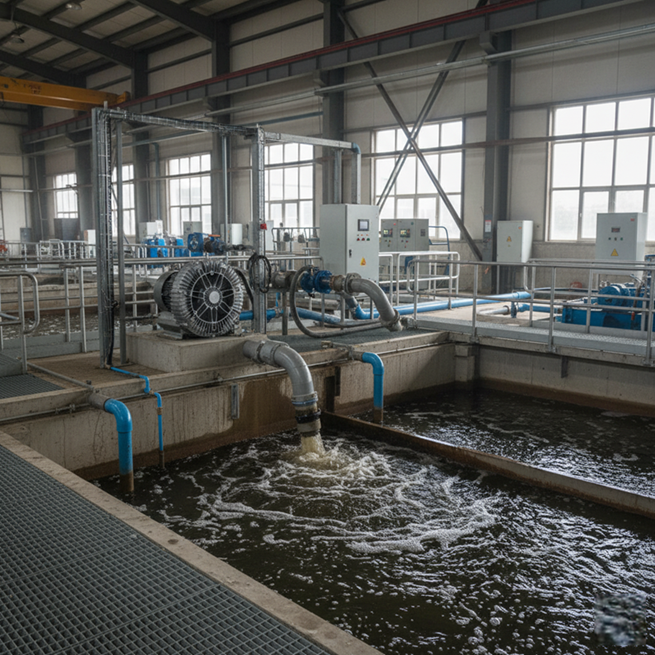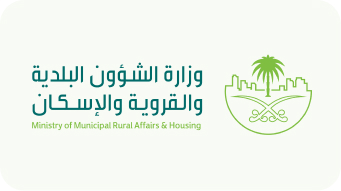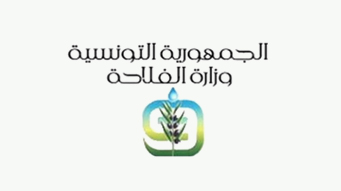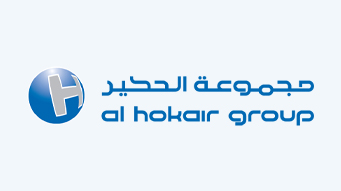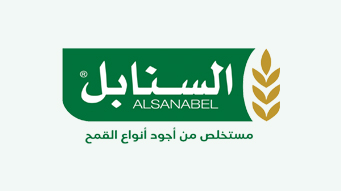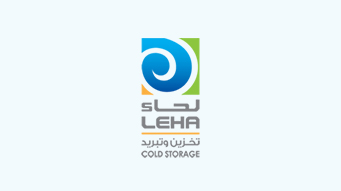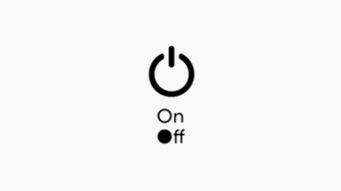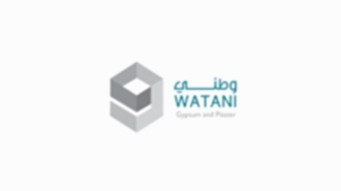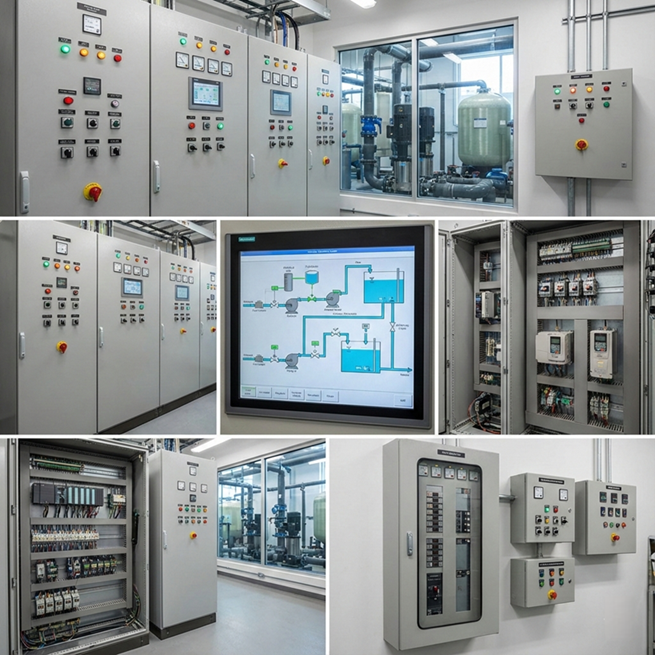
advanceTypes of Control Panels in Water Treatment Plants
Control panels are essential components in water treatment plants, serving as the operational backbone for monitoring various processes necessary to maintain water quality and safety. These panels can be classified into several types, including Programmable Logic Controller (PLC) panels, custom control panels, electrical control panels, motor control panels, Human-Machine Interface (HMI) panels, and Variable Frequency Drive (VFD) control panels. Each type plays a specific role in enhancing automation, operational efficiency, and real-time monitoring, all of which are vital for effective water management in both municipal and industrial environments.
The importance of control panels lies in their ability to optimize treatment processes, such as chemical dosing, filtration, and water flow management, ensuring compliance with environmental regulations and safeguarding public health. As water treatment facilities increasingly rely on automation and advanced technologies, control panels enable the integration of diverse systems and components, contributing to improved reliability and safety in water treatment operations.
Therefore, understanding the different types of control panels and their applications is crucial for maximizing the efficiency and effectiveness of water treatment facilities in a rapidly evolving regulatory and environmental environment.
Types of Control Panels
Control panels in water treatment plants serve as a vital interface for monitoring and controlling various processes within the facility. These panels can be classified based on their functions and the specific systems they manage.
Programmable Logic Controllers (PLCs)
Programmable Logic Controllers (PLCs) act as the brains of automated systems in water treatment plants. These panels incorporate programmable logic controllers that continuously monitor input devices, such as sensors and switches, and execute programmed responses to control various outputs. PLCs facilitate automation and improve operational efficiency by coordinating complex sequences of processes, such as chemical distribution and filtration management.
Custom Control Panels
For specialised applications in water treatment plants, custom control panels are designed to meet specific operational requirements. These panels integrate diverse control technologies and components independent of a single manufacturer to create tailored solutions. Custom control panels can include elements such as safety systems and communication interfaces, allowing for seamless integration with existing facility systems and ensuring that unique operational challenges are effectively addressed.
Understanding the different types of control panels and their applications is essential for the efficient operation and maintenance of water treatment plants, contributing to improved safety, reliability, and efficiency in water management processes.
Electrical Control Panels
Electrical control panels are fundamental for managing electrical equipment within water treatment plants. They typically include components such as switches, indicators, circuit breakers, and relays. Transformers may also be used to meet varying voltage requirements. The design of these panels varies considerably depending on the complexity and size of the electrical system being controlled.
Motor Control Panels
Motor control panels are specifically designed to control electric motors, which are essential for operating pumps and other mechanical systems in water treatment processes. These panels often include motor starters, motor overload relays for protection, and variable frequency drives (VFDs) that enable precise speed control. The combination of these components allows for the efficient operation and management of essential automated water treatment equipment.
Human-Machine Interface (HMI) Panels
Human-Machine Interface (HMI) panels provide operators with a user-friendly interface to interact with control systems. These panels display real-time data and system status, enabling effective process monitoring and control. In larger water treatment facilities, HMI panels are often connected to distributed input/output (I/O) structures, which reduce wiring costs and improve system reliability by providing unified control over widely distributed equipment.
Variable Frequency Drive (VFD) Control Panels
Variable frequency drive (VFD) control panels are essential for optimizing the performance of motors used in water treatment applications. By precisely controlling motor speed, torque, and acceleration, VFDs contribute to significant energy savings and reduced wear and tear on mechanical systems. These panels are often integrated with other control technologies to enhance the efficiency and overall performance of water treatment operations.
Key Components of Control Panels
Water treatment plant control panels are equipped with a variety of essential components that facilitate the monitoring and control of complex systems. These components work together to ensure operational efficiency, reliability, and the safety of treatment processes.
Main Components
Switches serve as the operator’s primary interface with the control panel, enabling manual control of the equipment. These switches allow operators to start or stop systems, adjust settings, and initiate processes as needed.
Sensors
Sensors, such as level, pressure, and flow sensors, are essential for real-time monitoring of system status. They provide valuable data to the Programmable Logic Controller (PLC), which then makes decisions about system operations, such as operating pumps or valves. Ensuring the accuracy and proper functioning of these sensors is critical, as any malfunction can lead to operational problems.
Programmable Logic Controllers (PLCs)
The PLC acts as the “brain” of the control panel, executing logical control operations based on data received from the sensors. It processes inputs and outputs, enabling automated responses to changing conditions within the water treatment system.
Circuit Breakers
Circuit Breakers and Valves are components that protect electrical circuits from overloads and sudden current surges, ensuring system safety and longevity. They also disconnect power in the event of a fault, preventing damage to sensitive components.
Relays and Contactors
Relays and contactors act as switches to manage the operation of larger equipment, such as pumps and motors. They allow small control signals from a programmable logic controller (PLC) to turn larger electrical loads on or off.
Variable Frequency Drives (VFDs)
Variable frequency drives (VFDs) are used to control the speed of electric motors, enabling variable flow rates as needed in the processing operation. This flexibility allows for more efficient energy use and improved system performance.
Display Panels
Display panels often feature indicators and digital displays that provide real-time feedback on system status. They allow operators to monitor various parameters, such as temperature and pressure, facilitating informed decision-making. Communication Networks
These networks form the backbone of communication, enabling seamless data transfer between various components. Including Programmable Logic Controllers (PLCs), Supervisory Control and Data Acquisition (SCADA) systems, and site devices. They ensure the fast and reliable transmission of commands and data, enhancing the overall efficiency of the system.
By understanding and effectively utilising these components. Water treatment plant operators can improve the performance and reliability of their control panels. Ultimately contributing to improved water treatment processes.
Excellence in Integrated Water Treatment Solutions
CareWater Establishment is committed to establishing itself as a leading strategic partner in the water sector by providing all parts and components for treatment plants that meet the highest international quality standards. We understand that plant efficiency depends on the integration of its elements. So we take great care to supply the latest technologies covering all stages of treatment. From the coagulant dosing units, the heart of the water treatment process is responsible for precisely removing fine particles. To advanced aeration systems. That plays a pivotal role in improving water quality and eliminating gases and pollutants. Our goal is to ensure the sustainability and maximum efficiency of your projects.

